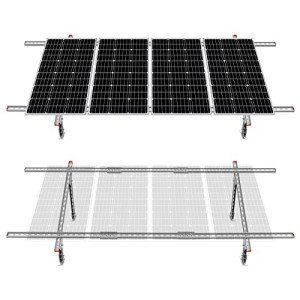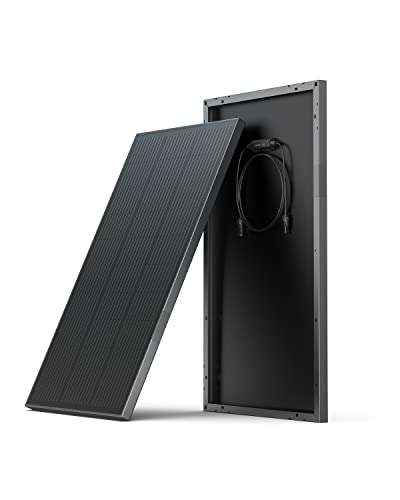Let's break it down a bit more. When the sun shines on the panel, the energy from the sunlight excites the electrons in the silicon. This excitement is what generates electricity. The cells work together to form a solar module, which is what you see installed on roofs or in solar farms. They’re designed to capture as much sunlight as possible, even on cloudy days!
It's not just about capturing sunlight, though. Solar panels also need a system to convert that direct current (DC) electricity into alternating current (AC) electricity, which is what most homes use. That’s where an inverter comes in. It’s like the translator that makes sure the energy is usable for your everyday appliances.
So, how do solar panels work in real life? Picture this: you’re running your fridge, watching TV, or charging your phone, all while the sun does its thing up there. Your solar panel system works hard to keep producing power for you, making your home more energy-efficient and saving you money in the long run. It’s a win-win!
The Science Behind Solar Energy
Solar energy is all about harnessing the sun's power to create electricity. It sounds magical, but there’s real science behind it. When sunlight hits the solar panels, it interacts with special materials called semiconductors. These materials are designed to absorb sunlight and convert it into electricity. Pretty cool, right?
So, how do solar panels work? After the sunlight strikes the solar cells, it knocks electrons loose from their atoms. This movement of electrons creates an electric current. The panels act like a mini power plant, turning sunlight directly into usable energy for your home. You can think of it as letting the sun do the heavy lifting for your electricity needs.
Most solar panels are made up of silicon-based cells. Silicon is a great material for this because it’s abundant and efficient at absorbing sunlight. When setting up, the panels get installed facing the sun, making sure they capture as much light as possible throughout the day. The more sunlight they get, the more energy they generate!
To keep everything running smoothly, solar panels are connected to an inverter. This nifty device converts the direct current (DC) from the panels into alternating current (AC), which is what your appliances use. In simple terms, the inverter helps you use the solar energy effectively in your everyday life.
Understanding how do solar panels work helps you see why they’re such a great investment. Not only can they lower your energy bills, but they also make a positive impact on the environment. Every little bit of power generated from the sun reduces reliance on fossil fuels, which is a win for everyone!
35 FT Adjustable Solar Panel Cleaning Kit
Keep your solar panels sparkling clean with this easy-to-use adjustable cleaning kit
Product information
$169.99
Product Review Score
4.82 out of 5 stars
28 reviewsProduct links
Key Components of Solar Panels
First off, we have the solar cells. These little guys, usually made from silicon, absorb sunlight and generate electrical currents. They’re the heart of the solar panel. When sunlight hits the solar cells, it excites the electrons, getting them to move, which creates that electric flow you need.
Next, we have the backing material. This is the sturdy part of the panel that keeps everything together and protects the solar cells from the elements. It’s like the armor for your solar setup, shielding the cells from moisture and physical damage while ensuring they stay in peak condition.
Then, there’s the glass layer, which covers the solar cells and sits on top. It’s specially treated to allow maximum sunlight in while keeping out harmful UV rays. This helps improve the efficiency of the solar cells while ensuring they’re safe and sound under any weather conditions.
Lastly, the wiring is essential, as it connects all those solar cells to your inverter and battery (if you have one). Good wiring helps ensure the electricity generated moves smoothly and efficiently, letting you enjoy that clean energy with no hitches. Understanding how do solar panels work means you’ll appreciate how these components come together to create a reliable energy source!
ECO-WORTHY Adjustable Solar Panel Mounting Brackets Kit
ECO-WORTHY Adjustable Solar Panel Mounting Brackets Kit keeps your solar panels secure and easily adjustable for optimal sun exposure
Product information
$169.99 $118.99
Product Review Score
4.56 out of 5 stars
50 reviewsProduct links
The Process of Converting Sunlight to Electricity
Understanding how do solar panels work starts with converting sunlight into electricity. It sounds like magic, but it’s really just smart science! Solar panels are made up of many tiny units called solar cells. These cells are usually made from silicon, which is a special material that reacts well to sunlight.
When sunlight hits the solar cells, it knocks electrons loose from their atoms. Think of it like a game of tag—sunlight tags the electrons and gets them moving! This creates an electric current. Solar panels are designed to capture this current and turn it into usable electricity. It’s pretty cool how something as simple as sunlight can generate power for our homes.
Next, the electricity generated by the panels is direct current (DC), which is different from the alternating current (AC) that your home appliances use. A device called an inverter comes into play here. It converts DC into AC, making it safe and ready for your fridge, lights, and all your electronic devices.
Once the electricity gets converted, it flows into your home. If you generate more power than you use, some systems allow you to feed that extra energy back into the grid, earning you credits on your utility bill. Now that you know how do solar panels work, it’s clear that going solar not only saves you money but also helps the environment!






